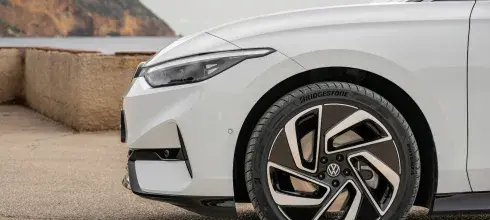
The Process of Shipping a Car in Three Phases
When it comes to shipping a car, many people are put off because they think it’s a complicated process. You’ll be pleased to learn that it’s much simpler than you think. Having your car shipped is done in 3 quick and easy phases.
Step 1: Get a quote and book your order.
Step 2: We pick up your vehicle.
Step 3: You receive your vehicle.
If you’re wondering how to ship your car, this post is for you. We’re about to explain each of these steps in more detail and put your mind at ease with regards to how hassle free the car shipping process is.
Step 1 Get a quote and book your order
Once you’ve decided you want to ship a car, the first step is to get a quote. SGT Auto Transport provides customers with a free instant quote calculator online. You provide a few simple details and in just a few minutes, you’ll have an all-inclusive quote to consider.
If you don’t want to use our online calculator, you can speak directly with one of our shipping advisors at (864) 546-5038 or via Live Chat.
The details you need to provide include the city and state where you want your vehicle to be picked up, and the city and state where you want your vehicle delivered. You’ll need to provide the vehicle make, model, and year of the vehicle and whether it’s running or not. In addition, you have to decide how you’d prefer to ship your car and when it will be ready for pick up (first available pick-up date).
Open car transport vs. enclosed auto transport
Your two main options, when it comes to having your car shipped, are open car transport and enclosed auto transport. Open car transport is the most common and economical way to ship a car. Your vehicle is transported on an open trailer. This option does expose your car to the elements, but it’s still a very safe and secure method that most customers prefer to use.
Enclosed auto transport costs between 30% and 40% more than open car transport, but your car will get the maximum protection. An enclosed trailer is used to transport your car and protect it from dirt, debris, moisture, salt, and the weather. Enclosed auto transport is a popular choice and is usually recommended for custom, classic, luxury, antique, and valuable vehicles.
Your auto transport quote
Your SGT Auto Transport quote will be all-inclusive. What this means for you is that the price includes full insurance coverage, fees, and taxes. You’re also under no obligation to take the car shipping process any further.
The quote is valid for seven calendar days, but you can update it or get a new quote at any time. Because the auto transport industry is very dynamic, we can’t provide a quote that’s valid for any longer than that because rates change weekly.
If you don’t make your booking within those 7 days just get back in touch, and we’ll quickly re-calculate the price.
Payment options
An important part of this first step is deciding how you want to pay. We offer two payment options:
Option 1: Discounted price
With this payment option, we take a small partial payment from your credit or debit card, once we’ve assigned a carrier to collect your vehicle. You pay the balance due when your car is delivered.
Payment options include cash, a cashier's check, or money order directly to the driver. There is no upfront payment when you complete your booking.
Option 2: Regular price
With this payment option, you pay everything in full when we assign a carrier to pick up your vehicle. No balance is due at the time of delivery. This payment option also requires no upfront payment when you complete your booking.
Getting your vehicle ready for shipping across the country
Shipping a car across the country isn’t a complicated process but a little more is involved than simply waiting for the carrier to collect the car and then handing over the keys. If you want to ensure a smooth and stress-free process and have peace of mind, the following tips will help.
1. Wash your vehicle, inside and outside
Washing your vehicle is important because it means you and the driver will be able to spot any existing damage. When the carrier arrives to collect your vehicle, they’ll conduct a visual inspection. This is standard procedure. Any existing damage is recorded on the Bill of Lading or the condition report.
When your vehicle is clean, you’ll be able to see any dings, paint chips, scratches, dents, or other damage. If you want to save time, make a note of any damage before the carrier arrives. It also means you’ll be less likely to miss something because you're feeling rushed.
Cleaning the inside of your vehicle means it's clean and tidy, ready for you to drive straight away when it’s delivered.
2. Take pictures of your vehicle
Spend some time taking pictures of your car, but make sure the images are clear, excellent quality, and dated. Take pictures of the damaged areas, as well as plenty of more general photos of your car from a variety of angles. Also, remember to take photos of the odometer, for your peace of mind.
There’s no such thing as too many photos. They will be for your records and protect you in the rare event of damage occurring during the process of shipping a car.
3. Clean the interior of your car
When you ship a car, it will most likely be on a large car trailer. Your car may bounce up and down while on the road which could cause loose items inside your car to move around.
To prevent any unwanted damage, remove items that are not secured, such as car chargers, phone holders, GPS devices, portable DVDs, and air fresheners. Also, consider removing small items such as spare change and pens.
As well as reducing the risk of damage, this step also helps to decrease the risk of theft or loss of these items during the car shipping process.
4. Remove or secure any accessories
Accessories such as custom spoilers, bike racks, luggage racks, or ski racks should also be removed. Also, remove your antenna and put it in the trunk of your vehicle if possible. Folding in your side-view mirrors is also a good idea.
5. Check the tires, battery, and radiator
A standard car battery should be fully charged and secure, and there should be antifreeze in the radiator. The tires should also be properly inflated as there is a risk of damage occurring if they are under or over-inflated. If you're shipping an EV, the cells or battery packs should be at a 30% state of charge for safety reasons.
6. Check for fluid leaks
Ideally, your vehicle should have no fluid leaks. If you find any, make sure you get them fixed before the driver picks up your vehicle. If there is a serious fluid leak, the carrier may refuse to accept your vehicle.
If the leak is minor and not easily fixed or you don’t have the time to fix it, let the driver know. They might be able to place your vehicle on the bottom row of the trailer, so it doesn’t drip on cars below.
7. Check for any mechanical and engine problems
If you’re not certain whether your car is in good working order, have a mechanic check it out before your car is picked up. If there’s time, have them tune it up and fix any problems as well.
If your car is not running, the carrier needs to know because they’ll need specialist equipment to load it onto the trailer. Bear in mind there are additional charges to ship an inoperable car.
8. Empty the gas tank to 1/8 to 1/4 full
There only needs to be enough gas in the tank for it to drive on and off the trailer. The lighter your car is, the better it is as it saves weight for the transporter.
9. Disable any alarms
Disable any alarms so the driver doesn’t get distracted by the alarm going off. He might not be able to get to the alarm easily or know how to shut it off.
10. Deactivate or remove toll tags
A toll tag is likely to pick up a fee as it doesn’t recognize whether the car is being driven or not. To save any unnecessary expense, remove or deactivate it before your car is picked up for shipping.
11. Have your keys ready
The driver will need your car keys to get your car on and off the trailer. For older vehicles, you might also need to provide a door key as well as the ignition key, and possibly even the key for the glove compartment.
Step 2 We pick up your vehicle
Your carrier will contact you a few hours ahead of time to let you know they’re on their way. You’ll need to confirm that the pick-up location is suitable for commercial vehicles. Parking restrictions, low-hanging branches, or overhead power cables will be a problem for the carrier’s truck and trailer.
When the carrier arrives, you both check the vehicle for any existing damage and record it on the Bill of Lading. You sign this important document, and the carrier can load your vehicle onto the auto transport trailer.
You’ll be able to check on the progress of your vehicle at any time during its journey. We’ll also send regular updates by email, Live Chat, or phone.
Step 3 You receive your vehicle
It won’t be long before you receive another call from the carrier to let you know they’re just a few hours away. This call is merely to check that you’re going to be available to accept delivery of your car.
It’s not a problem if you’re unavailable as you can nominate a third party to act on your behalf. The only stipulation is that they must be 18 years or older. You’re at liberty to ask a neighbor, relative, work colleague, or friend.
When the driver unloads your vehicle, they will ask you to check the vehicle’s condition, comparing it with the Bill of Lading. Also at this time, if you chose the Discounted Price payment option, now is the time when you hand over the final payment to the driver.
Want to learn more about auto transport? Get the answers to your questions here.
FAQs
Can you guarantee a pick-up date?
Yes, SGT Auto Transport can guarantee a pick-up date.
What does the first available pick-up date mean?
This is the day your vehicle is ready to be picked up.
Do I need to provide the exact address for a quote?
We don’t need an exact address, but we will need the pick-up and delivery city or ZIP codes.
Is my vehicle fully insured during car transport?
Yes, your vehicle is fully insured throughout the car transport process. Vehicles are covered by the motor carrier’s cargo insurance.
Can the First Available Pick-up Date be Changed?
Yes, you can change this information before or after booking by phone, Live Chat, or email.
What is a Bill of Lading?
This is an important document that serves as a receipt for freight services. It also acts as a record of the condition of your vehicle and contains details of the shipment such as the pick-up and delivery locations, the type of car being shipped, and how much was paid for the freight service.
What is top load placement?
Top load placement means your vehicle is loaded on the second level of the trailer, where it’s better protected.








